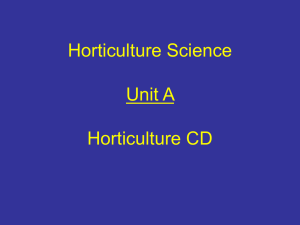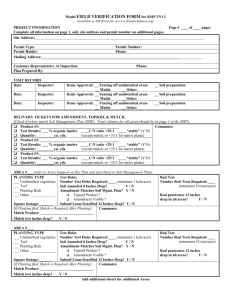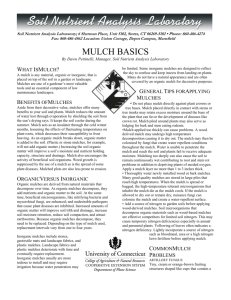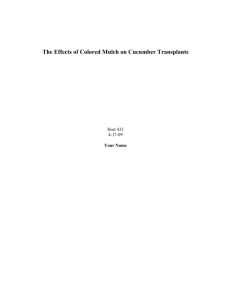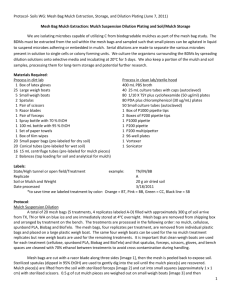Plant Nutrients Lesson Plan
advertisement
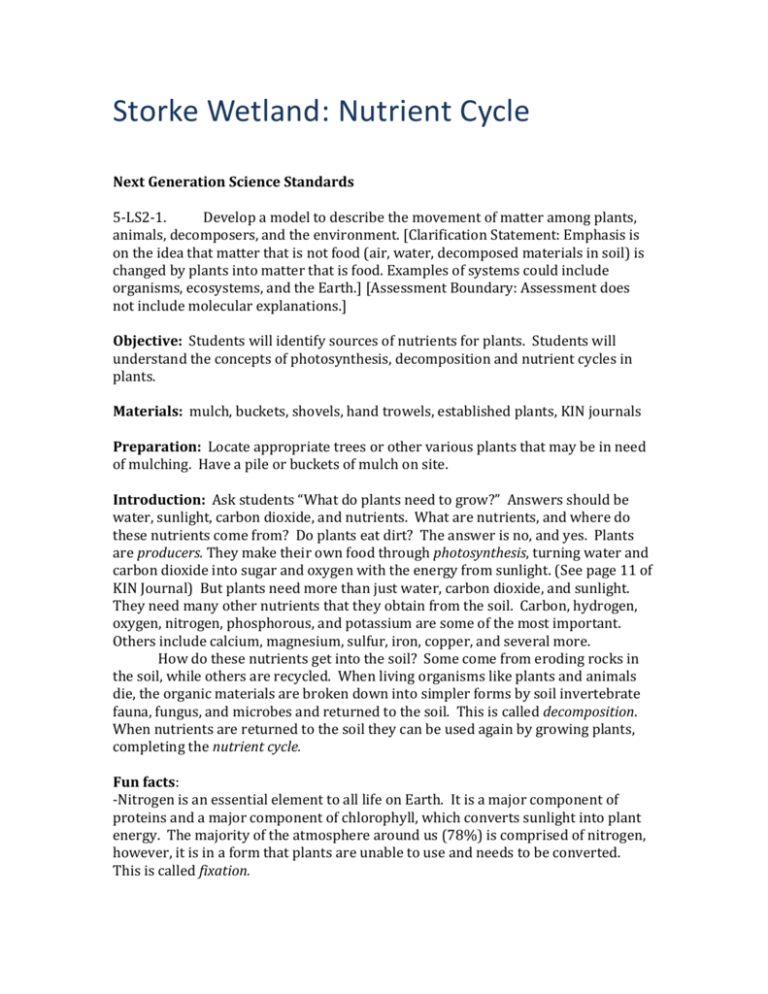
Storke Wetland: Nutrient Cycle Next Generation Science Standards 5-LS2-1. Develop a model to describe the movement of matter among plants, animals, decomposers, and the environment. [Clarification Statement: Emphasis is on the idea that matter that is not food (air, water, decomposed materials in soil) is changed by plants into matter that is food. Examples of systems could include organisms, ecosystems, and the Earth.] [Assessment Boundary: Assessment does not include molecular explanations.] Objective: Students will identify sources of nutrients for plants. Students will understand the concepts of photosynthesis, decomposition and nutrient cycles in plants. Materials: mulch, buckets, shovels, hand trowels, established plants, KIN journals Preparation: Locate appropriate trees or other various plants that may be in need of mulching. Have a pile or buckets of mulch on site. Introduction: Ask students “What do plants need to grow?” Answers should be water, sunlight, carbon dioxide, and nutrients. What are nutrients, and where do these nutrients come from? Do plants eat dirt? The answer is no, and yes. Plants are producers. They make their own food through photosynthesis, turning water and carbon dioxide into sugar and oxygen with the energy from sunlight. (See page 11 of KIN Journal) But plants need more than just water, carbon dioxide, and sunlight. They need many other nutrients that they obtain from the soil. Carbon, hydrogen, oxygen, nitrogen, phosphorous, and potassium are some of the most important. Others include calcium, magnesium, sulfur, iron, copper, and several more. How do these nutrients get into the soil? Some come from eroding rocks in the soil, while others are recycled. When living organisms like plants and animals die, the organic materials are broken down into simpler forms by soil invertebrate fauna, fungus, and microbes and returned to the soil. This is called decomposition. When nutrients are returned to the soil they can be used again by growing plants, completing the nutrient cycle. Fun facts: -Nitrogen is an essential element to all life on Earth. It is a major component of proteins and a major component of chlorophyll, which converts sunlight into plant energy. The majority of the atmosphere around us (78%) is comprised of nitrogen, however, it is in a form that plants are unable to use and needs to be converted. This is called fixation. -Some bacteria in the soil can fix nitrogen from the atmosphere, making it available to plants. Some plants have evolved mutually beneficial relationships with these bacteria. -In 1648, Johannes Baptista van Helmont conducted the first known quantitative experiment in Biology by planting a cutting of a willow tree weighing 5 lbs in a pot of soil. Five years later, after adding only water, the tree weighed 169 lbs, yet the weight of the soil had only decreased by two ounces. He deduced that the growth of the tree was due solely to water. He of course was only half right as much of the growth was also due to carbon from the atmosphere. Helmont also coined the term “gas” and discovered carbon dioxide. -A banana peel decomposes in 2 to10 days. -A pair of leather shoes may take 25 to 40 years to decompose. -There is no trash in nature. Everything is recycled. However, humans now create materials, like plastics, that never decompose. Procedure: Spread an even layer of mulch a few inches deep in the area surrounding, but not touching the plant or tree. Conclusion: Explain: By adding mulch to the soil we will be adding nutrients in the form of organic material. Here, we don’t use the word “organic” like they might at the grocery store. In science, “organic” is used to describe any materials consisting of molecules made of carbon and hydrogen. The mulch you are spreading is made of dead plant material and will decompose and release plant nutrients back into the soil. The above ground mulch will also protect the soil from drying out, conserving water. The mulch will also keep weeds from sprouting up.






